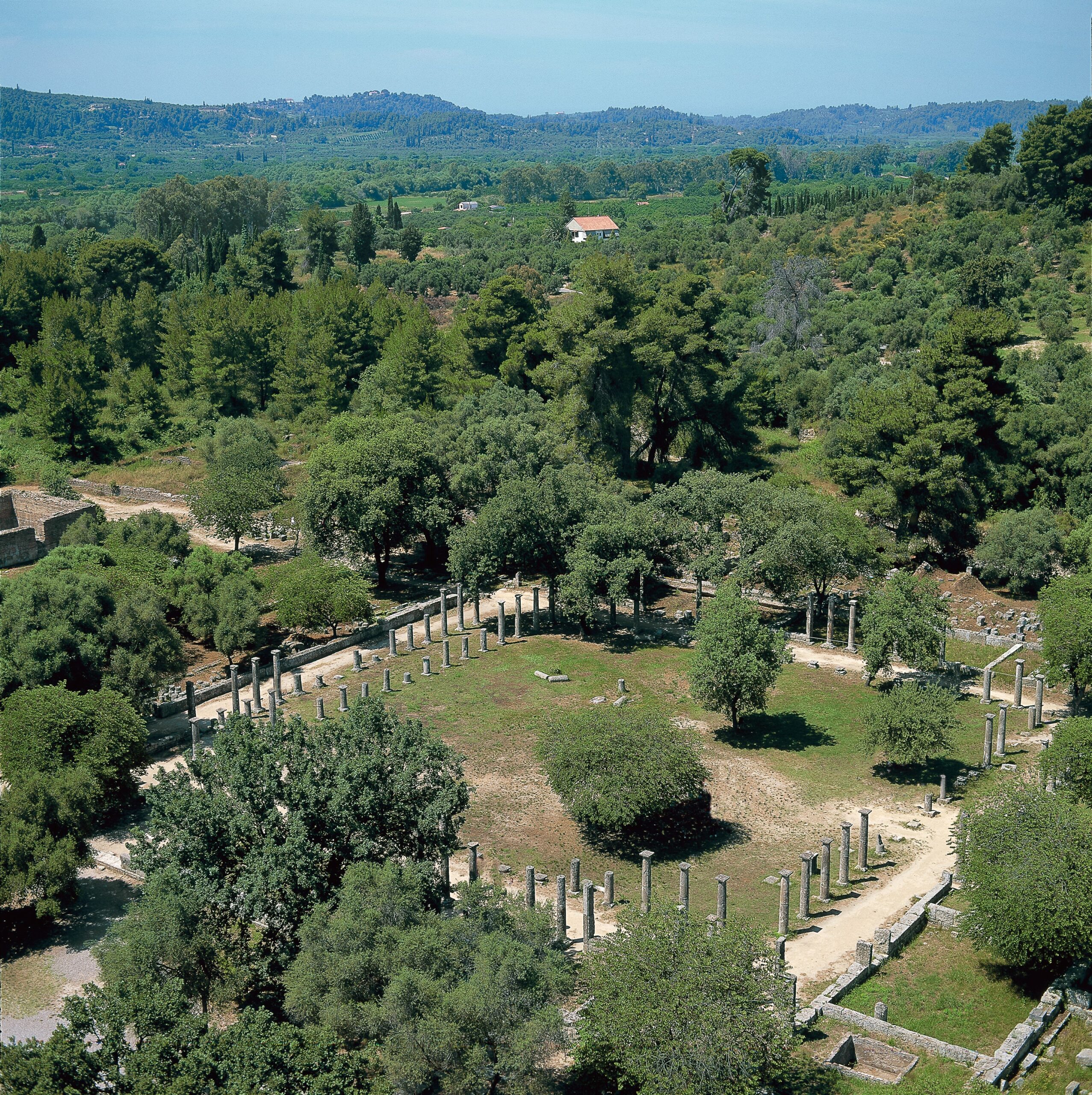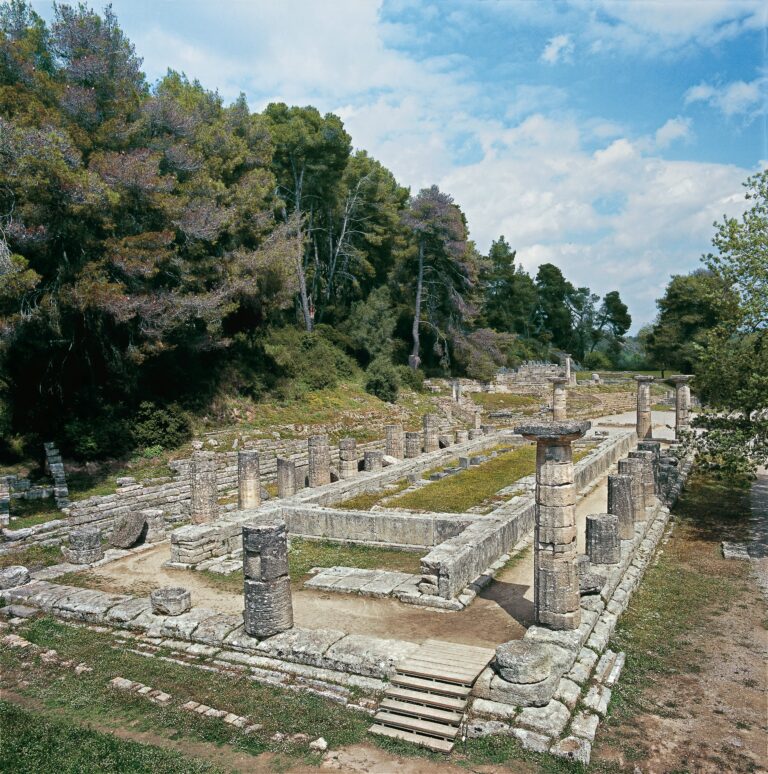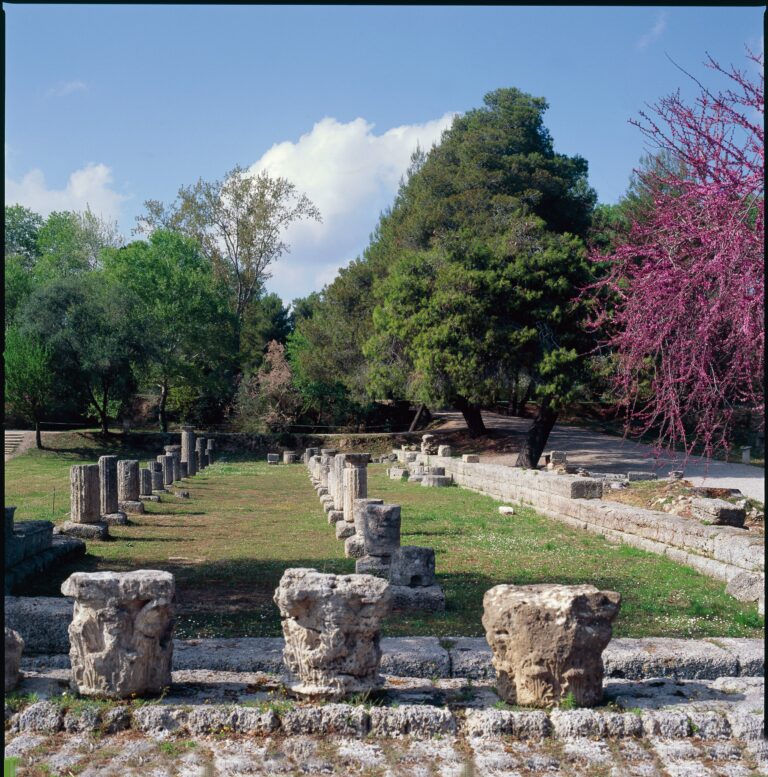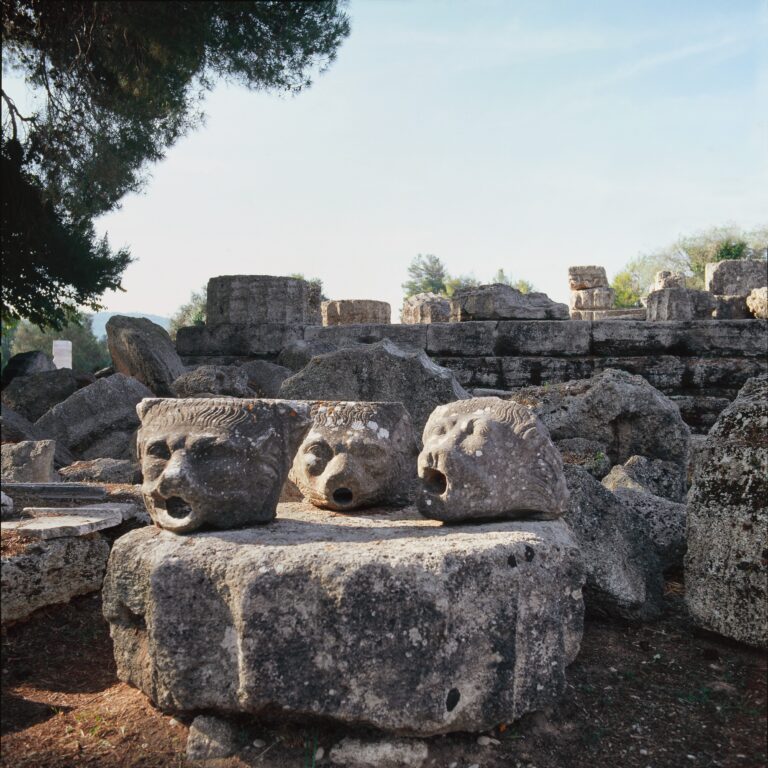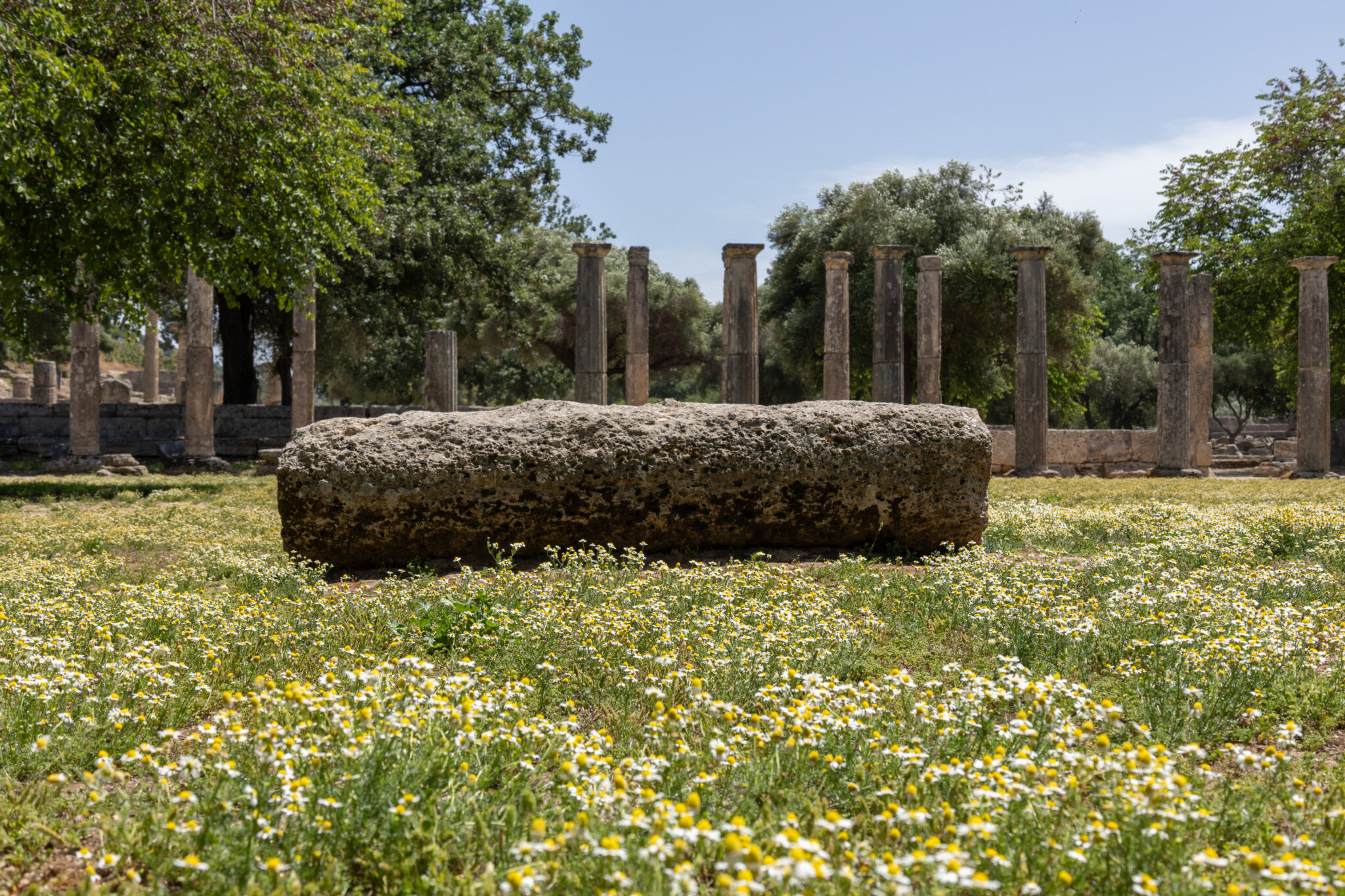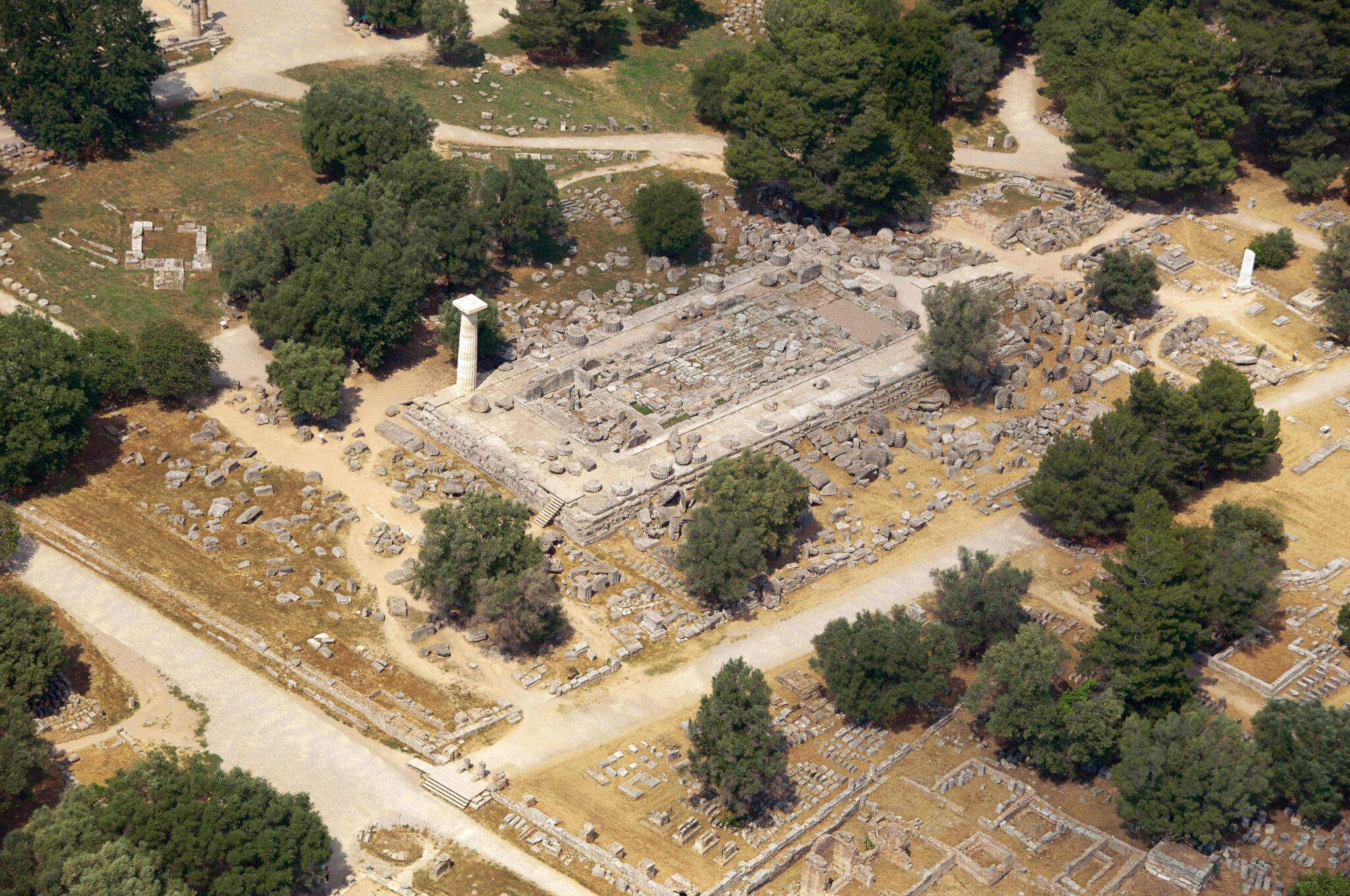Olympia was the most important sanctuary of ancient Greece, dedicated to Zeus, father of gods and men alike.
It lies at the southern foot of Mount Kronios, between the Alpheios River and its tributary, the Kladeos, and was continuously inhabited from the Neolithic period (around the 4th millennium BC), when a small farming settlement gradually evolved into the greatest religious center the ancient world had ever known.
The earliest traces of worship in the area date back to the Mycenaean period and are linked to both local and pan-Hellenic fertility deities, such as Rhea, Themis, Eileithyia, Cronus and Gaia, whose sanctuaries remained in use throughout antiquity. Olympia is also connected to the mythical hero Pelops and the Olympic Games, which, according to tradition, he established after defeating King Oinomaos in a chariot race. Another myth relates that the very first athletic contest took place here between Zeus and his father, Cronus.
The cult of Zeus was probably established around the 10th-9th century BC, and Olympia soon developed into a sanctuary of great religious and pan-Hellenic significance. At first, the Altis – the sacred grove at the foot of Mount Kronios, filled with wild olive trees, pines, and planes – had no buildings. Worshippers dedicated offerings outdoors, on altars or upon branches of trees. The earliest monumental structures, such as the Temple of Hera, the Prytaneion, the Bouleuterion, treasuries and the first stadium (where the earliest Olympic Games were held), date to the Archaic period.
The grand Temple of Zeus, which still dominates the archaeological site today, was built between 470-456 BC. The colossal chryselephantine statue of Zeus once stood inside, crafted by the famous sculptor Phidias. Rising 12 m in height, it had a wooden core overlaid with gold, ivory, silver and precious stones – one of the Seven Wonders of the Ancient World.
Later monumental structures include the Prytaneion, the circular Philippeion, the Echo Stoa, the Metroon, the Nymphaeum and the Leonidaion, a luxurious guesthouse. Secular buildings, such as the Gymnasium and the Palaestra, belong to the Hellenistic period.
The Nymphaeum, built by Herodes Atticus and his wife Regilla in the mid-2nd century AD, resolved Olympia’s long-standing water supply issues. In the early 4th century BC, the Zanes – bronze statues of Zeus – were erected with the fines collected from athletes guilty of bribery or cheating; their bases still survive today.
Just outside the sanctuary stands the workshop of Phidias, where he created the colossal statue of Zeus. Although the masterpiece itself has been lost to history, finds – such as molds, tools, and pottery – feed the imagination.
To the east of the Altis lies the Stadium of Olympia, where the ancient Olympic Games were held, as well as the Heraia, women’s competitions said to have been founded by Hippodameia, wife of Pelops, in honor of Hera, and open exclusively to female athletes.
The Olympic Games are traditionally dated to 776 BC (the first recorded Olympiad) and were held every four years. They continued until the early Christian era, when Emperor Theodosius I abolished them in AD 393 after the 293rd Olympiad.
The Games, along with the Olympic truce, became deeply popular across the ancient world. Initially, only citizens of Elis could compete, but soon athletes from the Peloponnese and other Greek city-states, such as Athens and eventually far-flung regions, like Magna Graecia, Asia Minor, Rhodes and Egypt (especially Alexandria), were admitted to the competition.
The earliest program included only the stadion race, a sprint, and lasted a single day. Over time, more events were added, and the Games expanded into a five-day festival. Spectators of all backgrounds – free men, slaves, and foreigners – were allowed, with the sole exception of women.
Access
27065, Ancient Olympia
3 hours and 30 minutes from Athens
1 hour and 25 minutes from Patras
Opening hours
April 1 – August 31
Daily: 08:00 – 20:00
September 1 – 15
Daily: 08:00 – 19:30
September 16 – 30
Daily: 08:00 – 19:00
October 1 – 15
Daily: 08:00 – 18:30
October 16 – 31
Daily: 08:00 – 18:00
November 1 – March 31
Daily: 08:30 – 15:30
The site remains closed on the following dates and public holidays: January 1, March 25, May 1, Easter Sunday, December 25 & 26.
Tickets
Full: €20,00
Reduced: €10,00
Access to: Ancient Olympia, Museum of Olympia and Museum of the Olympic Games
Amenities
Contact
Archaeological Site of Olympia
Τ: +30 26240 22517
Ilia Ephorate of Antiquities
Τ: +30 26240 23753
Ε: efahle@culture.gr

